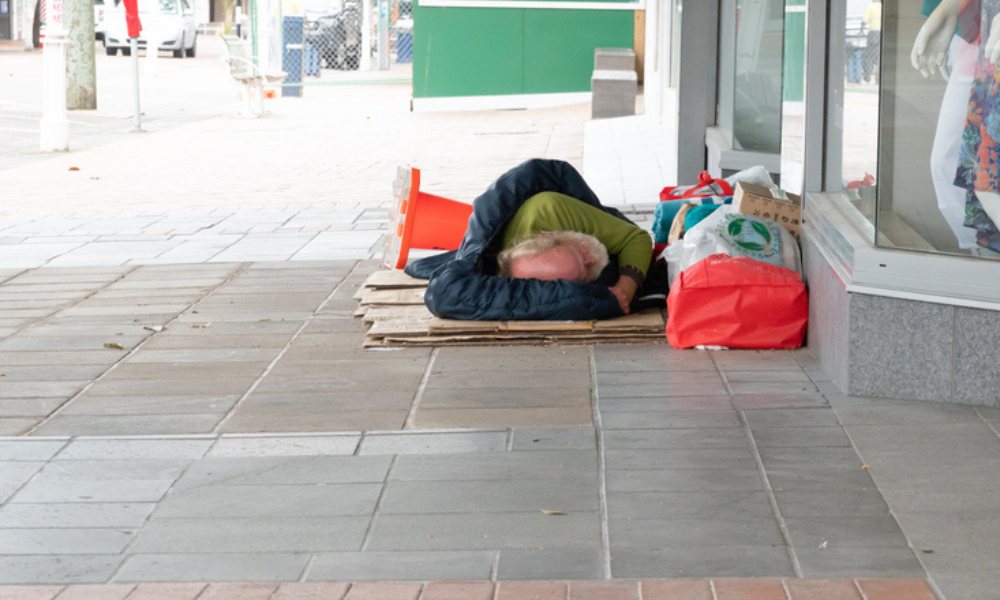The city has a new digital dashboard that aims to capture the city's housing needs

The number of people on lists for public housing and transfer registers in Tauranga skyrocketed by 360% to 5,128 in March, compared to the 1,114 people in June 2018, new data has revealed.
There has also been an increased demand for Emergency Housing Special Needs Grants and accommodation supplements. From the $1 million distributed locally to people who needed emergency housing funding in June 2018, it grew to $23.6 million in December 2021, before slipping to $22.6 million in March.
A total 45,000 people were granted accommodation supplements valued at $ million in June 2018. That number had increased to 59,000 at a cost of $5.9 million by December 2021, before dropping in March this year, with $5.6 million worth of grants given to 57,000 people, NZ Herald reported.
The figures were covered in a new Tauranga City Council digital dashboard, which was launched last month to capture the city’s housing needs and which, according to commissioner Bill Wasley, would be a huge asset when deciding how to target support for those in need.
“Decision-makers will be able to use the information to focus on and prioritise areas that need help the most, as well as help us advocate for our specific needs as a sub-region at a national level,” Wasley said.
Commissioner Shadrach Rolleston said everyone could now access housing data in the council’s website to find out who had homes, who did not, what rental homes cost, and how easy or hard they were to find.
In 2018, of the 109,152 Tauranga residents who participated in the Census, only 39,162 owned or partly owned their own home.
The population in Tauranga and the Western Bay that year was 188,037, which grew to an estimated 213,360 in 2021. During this period, the amount of public housing supply rose from 5,300 to 6,100.
While those in Tauranga’s social services sector agree regarding the rising demand, some at the frontline have questioned whether the data accurately reflected the scale of homelessness in the city.
Data showed a significant drop in the number of rough sleepers in Tauranga – from the 51 rough sleepers counted by the council in April 2021, to 20 in July 2021, before slightly increasing to 24 in October 2022, NZ Herald reported.
Social agencies, however, believe that the real number of homeless people in the city was much higher. According to a 2020 Tauranga City Council Vital Update survey, 4,835 of respondents were experiencing some level of homelessness.
Tommy Wilson, Te Tuinga Whanau Support Services Trust executive director, believed the number of people living rough on streets or in parks was closer to 300.
“We look after about 150 families, and we manage about 80 interventions a week – that’s 4,000 a year,” Wilson said. “Most are around homelessness and housing. The digital dashboard needs to reflect that. Right now, Te Tuinga is not reflected in any of the data. Yet, we would be one of the largest – if not the largest – providers of emergency housing in Tauranga. Where are we and the people we work with in the data?”
He said assumptions were often made about homeless people and it was important to involve those working in the sector when assessing need.
“People don’t quite understand the whakapapa of homelessness and emergency housing, and I don’t believe the council, or whoever put this together, understands that,” Wilson said.
According to Wilson’s estimates, about 120 people in Tauranga were living in cars and vans, and a further 180 to 200 were living in tents or on couches.
Laura Wood, operations manager at charitable trust Under the Stars, echoed Wilson’s view that the data regarding homelessness in Tauranga did not fully capture the situation. She was not “overly concerned” though as she was told work was under way to update this within the next six months.
“It’s not 100% accurate, but they acknowledged that,” she said. “Right now, it’s at a starting place with what information they have on hand at the moment, but it will improve ... this information will get better. Knowing that, I’m confident that when it is time for funding for these needs, they are aware that there are roughly 4,000 [homeless] in the area. These are big numbers, and there’s a big need.”
The dashboards were developed by the Kāinga Tupu Taskforce and the SmartGrowth Housing Action Plan Working Group, with the support of Data n Dashboards, to offer information in a user-friendly space, so people can make informed decisions, particularly regarding housing and homelessness.
Part one of actioning this was the launch, said Jodie Robertson, council impact and insights specialist, while the second stage aimed to localise the data as much as possible by working with local providers.
When asked if she believed the data accurately reflected the level of homelessness in Tauranga, Robertson said: “The number in the homelessness dashboard [24] is the known number of people experiencing homelessness that are currently located in tent sites. This is currently the only form of routine data collected and logged in the TCC system. The region, and New Zealand as a whole, does not currently have a routine and consistent method to accurately count homelessness numbers [across the full housing spectrum].”
The taskforce and Statistics NZ were planning to use next year’s census, however, to do a “point in time” homelessness count, which would be included in the dashboard to provide “a better understanding of the extent of homelessness in the Western Bay of Plenty,” she said.
Robertson said they would now consider renaming the “homeless” dashboard to better reflect the existing data, NZ Herald reported.
Have something to say about this story? Let us know in the comments below.



